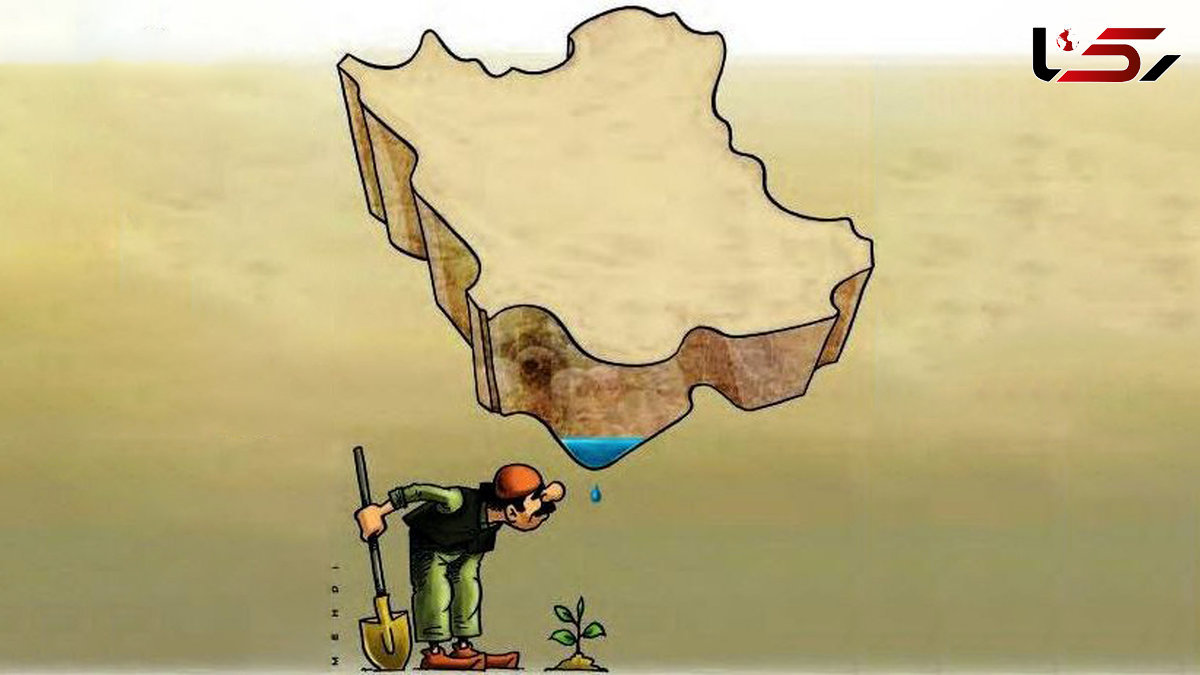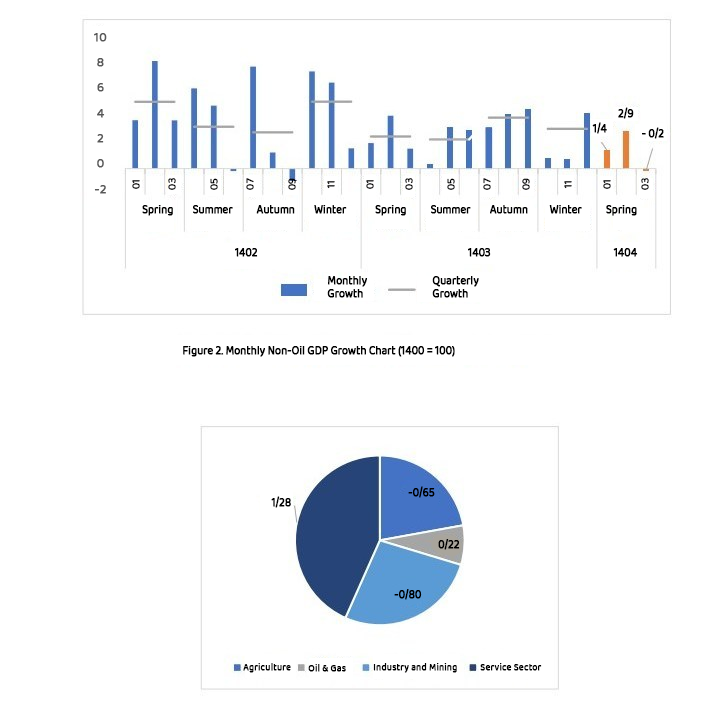Rokna Reports: Plunge in Agricultural Value Added in Khordad;
90% of National Water Resources Consumed by Loss-Making Agriculture
Rokna Economic Desk – The country’s economic growth in Khordad 1404 (May–June 2025) stood at only 0.1 percent, with the agriculture sector, posting a negative growth rate of 3.5 percent, being the main contributor to the slowdown in economic performance. This decline was driven by reduced production in crop, horticultural, and livestock products. Despite consuming 80 to 90 percent of the country’s water resources, the agriculture sector contributes only a small share to the Gross Domestic Product (GDP). Owing to irrational and poorly designed policies, an excessive focus on water-intensive crops, and lack of technological advancement, the sector’s productivity remains extremely low.

According to Rokna’s economic correspondent, based on calculations from the Parliament Research Center, the country’s economic growth in Khordad 1404 (May–June 2025), compared to the same month of the previous year, is estimated at 0.1 percent, while non-oil economic growth is projected at -0.2 percent. The center’s estimations indicate that in Khordad 1404, compared to the corresponding month of the previous year, the value added of the agriculture sector recorded a negative growth rate of -3.5 percent.
Negative Agricultural Growth in Khordad 1404
According to this report, the value added of the agricultural group, with a negative growth of 3.5 percent compared to Khordad of the previous year, has recorded one of the weakest performances. Estimates made in this regard, based on foundational data received from the Ministry of Agriculture Jihad, indicate a decline in the production of crop products in Khordad. This comes while growth in the agriculture sector during Farvardin and Ordibehesht (March to May) was also severely negative.
Out of the 0.1 percentage point growth recorded in Khordad 1404, the agriculture sector’s contribution was a negative 0.65 percentage point.
According to the Central Bank, the agriculture sector had registered a growth of 3.6 percent in the year 1403 (March 2024–March 2025). However, the center’s latest estimates indicate that in Khordad 1404, the value added of the agricultural group, compared to the same month of the previous year, declined by 3.5 percent.
These estimates, based on foundational statistics received from the Ministry of Agriculture Jihad, show that, in comparison to the same month of the previous year, the production of crop products decreased by 10 percent, and horticultural and livestock products declined by 3 percent and 1 percent, respectively. Additionally, according to statistics received from the National Center for Climate and Drought Crisis Management, rainfall in Khordad 1404 declined by 4 millimeters.
According to these findings, and based on the center’s calculations regarding the value added of the agriculture sector during Farvardin and Ordibehesht, the growth of value added in this sector during spring 1404, compared to the same season in the previous year, is estimated at -4.7 percent.

Table 2. Value-Added Growth by Economic Activity (Base Year = 1400 = 100)
| Sector | Spring 1404 | Khordad 1404 | Ordibehesht 1404 | Farvardin 1404 | Year 1403 |
|---|---|---|---|---|---|
| Agricultural Sector | -4.7% | -3.5% | -8.7% | -7.9% | 3.6% |
| Oil and Natural Gas | 2.9% | 2.9% | 3.0% | 2.9% | 4.6% |
| Industry and Mining Sector | -1.1% | -2.6% | 0.3% | -0.9% | 2.4% |
| Services Sector | 4.2% | 3.0% | 5.9% | 3.6% | 3.3% |
| Gross National Product (GNP) | 1.4% | 0.1% | 2.9% | 1.6% | 3.1% |
| Gross Domestic Product (Non-Oil) | 1.2% | -0.2% | 2.9% | 1.4% | 3.0% |
90% Water Consumption but Less Than 4% Economic Growth!
While 80 to 90 percent of the country’s total water consumption is allocated to the agriculture sector, the Seventh Development Plan stipulates that annual water consumption in agriculture must be reduced to 65 billion cubic meters, and the country’s 15-billion-cubic-meter water deficit must be resolved. However, in the same development plan, the government is also mandated to achieve 90 percent self-sufficiency in the production of essential and strategic agricultural products by the end of the plan.
Although Iran’s average annual rainfall is only about 260 millimeters, equivalent to 32.5 percent—or approximately one-third—of the global average rainfall, national policy—particularly in the field of agriculture—does not align with this climate reality, and up to 90 percent of the country’s total water resources are consumed in agriculture.
Meanwhile, in the year 1402 (March 2023–March 2024), the agriculture sector contributed only 8.3 percent to the country’s Gross Domestic Product (GDP). This year, that figure has declined by 3.5 percent compared to Khordad 1403, indicating the severe lack of productivity in Iran’s agriculture.
Iran’s agriculture continues to focus on the production of water-intensive crops, and the lack of technological development, absence of regional planning, and overreliance on slogans of self-sufficiency have not only failed to secure strategic independence in essential crops like wheat and rice, but have also led to the allocation of up to 90 percent of national water resources to a loss-making sector.
In addition, this policy approach has imposed immense costs through seawater transfer projects to various regions of the country, the costs of which are several times greater than the value added generated by agriculture in those regions.
Send Comments